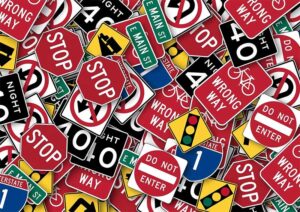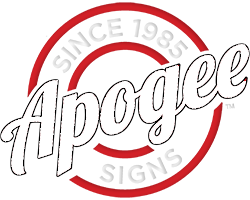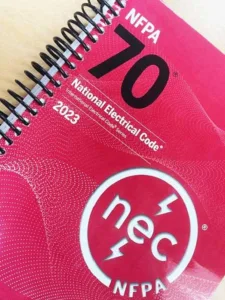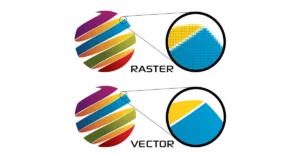 In a world defined by diverse languages, cultures, and traditions, an unexpected universal language has emerged – signage. Humble in appearance yet omnipresent, signage has become a silent communicator, uniting people across borders and cultures with astonishing clarity. At its core lies the Universal Color Coding of signs, a standardized system that defies language barriers and imparts vital information effortlessly.
In a world defined by diverse languages, cultures, and traditions, an unexpected universal language has emerged – signage. Humble in appearance yet omnipresent, signage has become a silent communicator, uniting people across borders and cultures with astonishing clarity. At its core lies the Universal Color Coding of signs, a standardized system that defies language barriers and imparts vital information effortlessly.
From bustling metropolises governed by traffic signals to foreign lands guided by pictograms, the language of signs silently shapes our collective experiences. Within this unassuming visual language lies the key to transcending cultural borders and connecting individuals from every corner of the globe. The Universal Color Coding of signage stands as a masterstroke, employing a carefully curated palette of colors, each imbued with specific meanings. From cautionary reds signifying danger to reassuring greens denoting safety, these color codes evoke an intuitive response in the human psyche, guiding our actions and reactions with remarkable efficiency.
Beyond mere convenience, Universal Color Coding holds profound implications for public safety and efficient communication. In emergencies, where every second counts, the immediacy of color-coded signals can save lives. When navigating unfamiliar terrains, the color-coded signs provide a sense of familiarity, empowering individuals to find their way with ease. This article sheds light on the profound influence of the Universal Color Coding of signage, revealing how this unanticipated language has woven itself into the fabric of our interconnected world. Through an exploration of its origins, global adoption, and cultural significance, we uncover the secrets behind this unifying force, showcasing that the most powerful communication often lies not in spoken or written words, but in the universal language of colors and symbols.
The Evolution of Color-Coded Signs
The Evolution of Color-Coded Signs can be traced back to ancient civilizations that harnessed the power of colors to convey messages and signify attributes. However, it was during the industrialization era that the need for standardized safety and communication systems led to the widespread adoption of color-coded signs.
 This approach ensured clarity and understanding across borders and language barriers, enabling people from diverse backgrounds to interpret critical messages swiftly and accurately. Various industries, such as transportation, healthcare, and public facilities, recognized the importance of uniformity in conveying information and developed universal color-coding systems for signs.
This approach ensured clarity and understanding across borders and language barriers, enabling people from diverse backgrounds to interpret critical messages swiftly and accurately. Various industries, such as transportation, healthcare, and public facilities, recognized the importance of uniformity in conveying information and developed universal color-coding systems for signs.
Today, color-coded signs have become an integral part of our daily lives, blending seamlessly into the urban landscape and public spaces. The standardized color schemes, such as red for stop signs, yellow for caution, green for directional guidance, and blue for information, create a visual language that is universally recognized. These color codes not only enhance safety in our communities but also facilitate international travel and communication, fostering a global language that transcends spoken words. Through the Evolution of Color-Coded Signs, we witness the enduring power of colors as a silent communicator, weaving a cohesive tapestry of understanding in our interconnected world.
The Universal Color Code
Over time, a set of common color associations emerged, which became widely accepted as the Universal Color Code for signs. Although there may be slight regional variations, the core meanings of colors remain remarkably consistent worldwide.
Below are some prevalent examples of color-coded signs and their meanings, serving as a testament to the power of visual communication. The Universal Color Code for signs has transcended linguistic barriers, offering a standardized system that enables people from diverse backgrounds to understand essential messages with ease. Let’s explore the significance of each hue and how it forms an indispensable part of our daily lives.
- Red: Red is universally recognized as a color of warning and danger. It typically indicates prohibitions, such as “stop,” “do not enter,” or “danger ahead.” Red is also used to highlight emergency-related information and fire safety equipment.
- Yellow: Yellow signifies caution and is often associated with warning signs that advise people to be aware of potential hazards. It can also indicate temporary conditions, such as construction zones or roadwork.
- Green: Green generally indicates safety, permission, or positive action. Signs with green backgrounds often show directions, guidance, or locations of safe zones, such as emergency exits.
- Blue: Blue is commonly used to convey information or provide guidance. Signs with blue backgrounds may indicate essential facilities like restrooms, information centers, or areas for specific activities.
- Orange: Orange is often associated with temporary or construction-related signs. It serves as a warning color for potential hazards in construction sites, road repairs, or maintenance areas.
- White: White is typically used as the primary background color for regulatory signs that convey specific rules, such as speed limits or parking restrictions.
- Black: Black is commonly used for contrasting text or symbols, providing clarity and visibility against lighter backgrounds.
Impact and Importance
 The Universal Color Coding of signs plays a crucial role in public safety and effective communication. Regardless of the language spoken, people can quickly grasp the meaning of a sign by recognizing its color-coded cues. This is particularly vital in emergency situations where quick responses can save lives. Additionally, for travelers exploring foreign lands, understanding color-coded signs becomes indispensable for navigating unfamiliar territories and ensuring personal safety.
The Universal Color Coding of signs plays a crucial role in public safety and effective communication. Regardless of the language spoken, people can quickly grasp the meaning of a sign by recognizing its color-coded cues. This is particularly vital in emergency situations where quick responses can save lives. Additionally, for travelers exploring foreign lands, understanding color-coded signs becomes indispensable for navigating unfamiliar territories and ensuring personal safety.
Moreover, color-coded signs also benefit individuals with color vision impairments. The use of contrasting colors and distinctive shapes can aid those with visual challenges in comprehending the messages conveyed by the signs.
In summary, we live in a world shaped by diversity and interconnectedness, the Universal Color Coding of signs stands as a powerful unifying force that transcends language barriers and fosters seamless communication. By adhering to this standardized system of color associations in our signage, we unlock a universal language that speaks to people from all walks of life. The significance of color-coded signs goes beyond mere aesthetics; it enhances safety, streamlines information dissemination, and empowers individuals to navigate their surroundings with confidence.
As we continue to progress, it becomes increasingly vital to uphold and promote the Universal Color Coding of signs. This global language of colors enables us to communicate efficiently and effectively, promoting safety and understanding on a global scale. By embracing this universal language of signs, we weave a tapestry of unity amidst our diverse world, where colors silently bridge gaps, guiding us on our collective journey through the intricacies of modern life. Let us cherish and preserve this unanticipated universal language, ensuring that its harmonious impact resonates in every corner of our interconnected planet.






